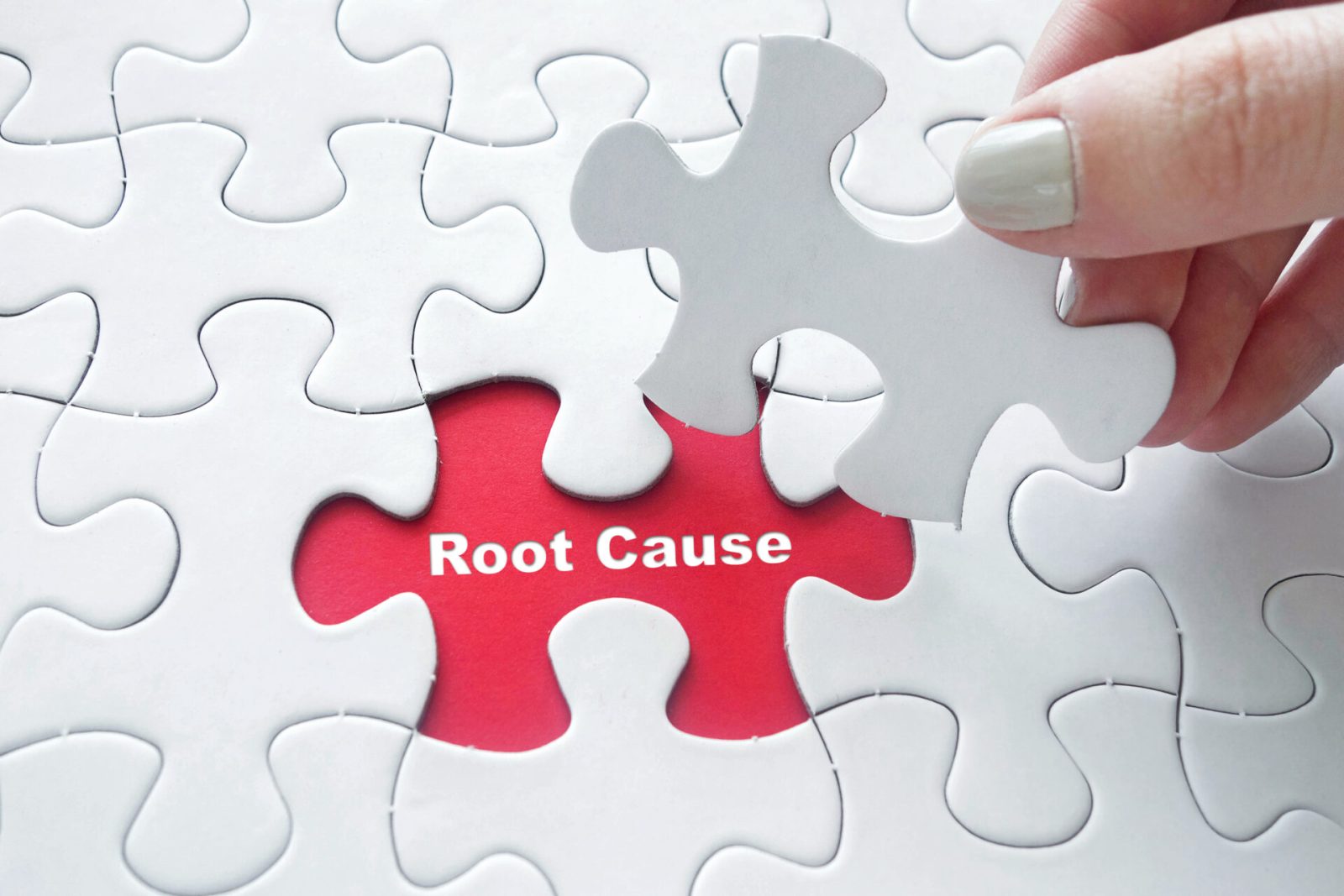One of the most common techniques for root cause analysis is the “5 Whys” approach. Made popular by Toyota as a part of their manufacturing methodology and promoted as a non-statistical analysis technique for Six Sigma quality, 5 whys is perhaps one of the most well-known root cause analysis techniques. By asking a set of iterative probing questions, the analyst is able to look beyond symptoms to gain insight into the systemic cause(s) that underlie(s) a problem.
While the technique is simple and easy for most people to understand, a question often asked is: “how many whys does it really take to get to root cause?” The answer… “it depends”. Some people claim to get there in 3 iterations, others can take 7-10. 5 whys seems to be the average and a good guideline and starting place. Further complicating the question is that some problems are the result of multiple sequential causes, some are the result of multiple causal factors occurring in parallel, and some are the result of a combination of both. For example, see abbreviated versions of Cement Falling from the Jefferson Memorial and Loss of Life from the Titanic Sinking just below.
Although, more complete versions of both these scenarios show many more levels of why than these versions, other problems may require less whys to get to root cause. In practical application, the number of whys needed depends upon the understanding needed to identify appropriate and actionable responses.
In both of these examples, and for most problems, root cause is ultimately a less than perfect decision. Someone chose to turn on the lights of the Jefferson Memorial at dusk, prime time to attract midges, and the Directors of the White Star Line – owners of the Titanic – prioritized aesthetics over safety. Also, in both examples, environmental conditions contributed to the presenting problem. However, whether or not irreversible decisions or environmental conditions contributed to cause, to restore performance and prevent recurrence we need to respond with action. We employ the 5 whys to identify all of the contributing factors so we can choose those we can most efficiently and effectively address.
Effectively and efficiently identifying those factors depends upon the quality of the questions we ask to glean or derive answers for each why. There are two dimensions that impact the quality of the questions we ask.
The first is how well we use existing information to challenge our assumptions and as the starting point for formulating questions to gather any additional information needed. By separating what we know from what we don’t know, we avoid the trap of filling information gaps with false assumptions, which could lead to inappropriate responses.
The second is how well the questions are used to probe for specific causal factors so we can take specific actions. By probing for answers, we avoid asking questions to confirm our biases or settling for generic answers that will lead to generic responses.
The answer to “how many whys does it take to get to root cause?” depends on how many layers we need to work through to reach the systemic factors that allowed the presenting problem to occur so we can identify appropriate and actionable responses. The time it takes to work through those layers depends upon the skills of the analyst in using available information to guide their questioning and the rigor with which they search for answers.
Root cause analysis training and coaching can help develop the skills to assess the information available when the problem is discovered, determine what questions to ask based on that information, use those questions to get the most value out of each round of questioning, and recognize when exploration has gone deep enough to provide confidence in the root cause and actions identified. Kepner-Tregoe has been helping companies unearth the root cause of critical business problems for over 60 years. With training and coaching from KT, your organization can leverage this experience to up-level your organizations root cause analysis capabilities. The question will then shift from “how many whys” to “how many wins”.







